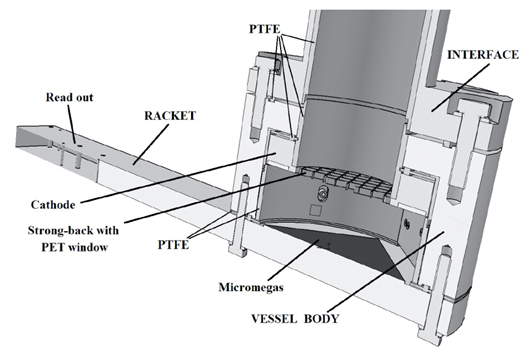Axion helioscopes like CAST or the future IAXO need to detect x-rays with very low background level. A very promising technological choice for x-ray detection in helioscopes are TPCs like the ones developed within T-REX.
Solar axion-induced x-rays can be detected by small TPCs in which the cathode is made of a x-ray-transparent foil (x-ray window), and the drift distance is sufficiently thick to stop 1-10 keV photons. The current design choice in CAST is 3 cms of drift at 1.3 bar pressure. The foil must withstand the pressure difference to the vacuum of the magnet bore, so it is held on a metallic strongback. The TPC readout is a highly pixelised microbulk Micromegas. A design of a recent version of this type of detectors is shown below.
Background levels below 10-6 ckeV-1cm-2s-1 have been achieved in the last runs at CAST, and close to 10-7 ckeV-1cm-2s-1 in special shielding environment underground at the Laboratorio Subterráneo de Canfranc. These record values are achieved by a combination of strategies:
- Detector shielding from external radiation
- Use of offline discrimination using detailed topological information provided by the pixelised readout
- Use of radiopure materials for the detector components
You can find technical and scientific results about our detectors for axion research in several T-REX publications. And also in the
- CAST UNIZAR web,
- CAST CERN web,
- and the forthcoming IAXO web at CERN.


